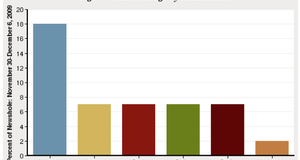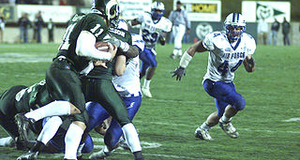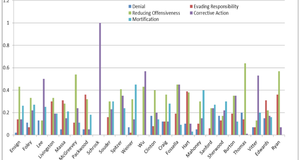From Elon Journal of Undergraduate Research in Communications VOL. 6 NO. 2Image Repair and Crisis Response of Professional Athlete Adrian Peterson
IN THIS ARTICLE
KEYWORDS
AbstractDuring the 2014 season, a disastrous year in terms of public relations for the NFL, Adrian Peterson was among those who tainted the league's reputation. Domestic violence was at the forefront of the controversy, and Peterson's child abuse case caused additional damage to the league's image. This qualitative content analysis scrutinized Peterson's attempt to repair his image through the media after receiving public backlash from his child abuse charges. The study found that his media messages used evasion of responsibility and reducing offensiveness as his chief strategies, but their effects were not fully successful. I. IntroductionAs the media continue to become further rooted in professional sports, the more personal lives of athletes become exposed. As a result, sports fans become more knowledgeable to the personal lives of athletes and develop opinions on these athletes, whether good or bad. It is inevitable that athletes are exposed to the public when they commit an offensive act, which is why the study of image repair for modern athletes is critical. While each account is different and carries diverse consequences whether legal or personal, it is up to athletes to repair their own image. If an athlete is caught in a situation that requires image repair, it is important to understand the most effective tactics and strategies used to help mend reputation. In this case study, Peterson and his child abuse case will serve as an example of an athlete who has committed an offense and has fallen out of grace with the public. This paper assessed the image repair strategies used by Peterson in his public statements using a variety of image repair theories in public relations. II. BackgroundIn a disastrous year in terms of public relations for the NFL, Peterson was amongst those who tainted the league's reputation. Domestic violence was at the forefront of the controversy, and Peterson's child abuse case caused additional damage to the image of the league. Peterson's case began on May 18, 2014, during the NFL's offseason. While in Texas, Peterson disciplined his son after he pushed his brother during a motorbike video game, according to a police report. Peterson used a switch — a thin branch or rod for whipping — to discipline his son, which caused bruises and lacerations on the boy's back, legs, arms, and buttocks. While back home in Minnesota with his mother, the doctor noticed the injuries during a routine check up. The doctor informed the mother that the injuries were consistent with child abuse, and authorities in Texas were notified (DiMatteo, 2014). In August 2014, Peterson testified before a grand Jury in Montgomery County, Texas. The jury initially decided not to indict Peterson on charges of child abuse, but in September. Peterson was indicted in Montgomery County and, subsequently, benched by the Vikings for their game against the New England Patriots. During this time Radisson hotels and other sponsors suspended their sponsorship of the Vikings and Adrian Peterson (DiMatteo, 2014). Later in September Peterson was placed on the commissioner's exempt list, which is essentially paid leave (Bien, 2014). He continued to lose sponsors during this time period including Nike and Castrol (DiMatteo, 2014). In November, Peterson agreed to a plea deal that reduced his felony child-abuse charges to a single charge of reckless assault. This required him to pay a $4,000 fine and perform community service (Zinser, 2014). Two weeks later the NFL announced that Peterson would be suspended without pay for the remainder of the season. He went on to appeal the suspension, but his motion was denied by the NFL (Vensel 2014, p. 1). III. Literature ReviewTo analyze whether Peterson's strategies were effective, this paper relied on two theories: apologia theory and image repair theory. Apologia TheoryApologia theory has most likely influenced the responses of many athletes in a media crisis. In these situations athletes are presented with an opportunity to respond to the public for their wrongdoings. When a person or a business fails to live up to certain moral conduct or they fail in any other way, they are expected to defend themselves. The different approaches to this defense is defined as the apologia theory. When one's image is threatened, apologias are utilized to repair the damage to their reputation. Not only does apologia theory allow for a person to be held morally accountable. but it also gives merit to those who expect a higher standard of ethics from the accused. Image repair is accomplished through actions as well as communication and transparency. The media plays a key role in the apologia process for public figures. The media provide a channel for apologia statements to be on the public record and provide public figures with a means for transparent communication with their publics (Borden 2012, pp. 1-2). For an apologia to be ethical, the guilty party must first admit the transgression if the accusations are truthful. Injury happens not only through harmful consequences but also moral violations, such as a broken promise or unfair advantage. Apologia should be mostly used for the purpose of reconciliation rather than self-interest. Apologizing for an indiscretion out of selfishness will create a hollow and unethical response. Attempting to find the best apologia rather than being strategic by using the most acceptable apologia shows one's attempt to be morally sound (Borden 2012, pp. 2,3,5). The manner of an ethically ideal apologia begins with an honest admission and avoidance of dishonesty. The apology must be issued as soon as the indiscretion is known and without coercion. Furthermore, it must address all publics that are involved or were affected. Next, it must be performed in the right context, which takes into consideration the location and the medium in which it is expressed. The content of an ethically sound apologia should first acknowledge the wrongdoing as well as fully accept the responsibility of one's actions. The accused must express regret in their actions and attempt to identify with the injured party. This should be followed by a request for forgiveness in addition to pursuing reconciliation with the damaged stakeholder. The accused should not withhold any additional information in regards to the indiscretion and offer an explanation as to why the accused is at fault in the eyes of the accuser. Finally, the accused should offer to make up for their offense in whatever way is deemed necessary (Borden, 2012, pp. 5-6). Ware and Linkugel conducted the first prominent work on apologia theory in 1973. The purpose of their work stems from the studies of social psychologist Abelson, who wrote, "It is natural for an attack on a person's character to create a response from that person because when the public witnesses an attack on a person's morality, motives or reputation, they expect a response from the accused" (Brown 2012, p. 15). Ware and Linkugel categorized the apologia theory into four major categories: denial, bolstering, differentiation, and transcendence (p. 15). Denial strategy involves the accused entity denying that the misconduct ever took place. Clearly, denial strategy is used when the accusations of wrongdoing are false or deceptive (Utsler & Epp, 2013, p. 141). Bolstering technique attempts to identify with the audience through a positive common image. The individual being accused of misconduct attempts to remind the accuser or audience of positive parts of their past. In this technique, the accused is not denying guilt but rather trying to cast off the blame that they are receiving. Bolstering is not seen as an effective apologia strategy due to the fact that there is an admittance of guilt by not addressing the problem directly (Brown, Dickhaus, & Long, 2012, p. 151). Differentiation strategy attempts to separate the act from the accused party's character and the public opinion. The person accused tries to illustrate the accusation in a different context, therefore, giving it a new meaning (Utsler & Epp 2013, p. 142). By using differentiation the party at fault is able to suspend judgment momentarily in hopes that future context of the act in question can be seen differently (Brown, Dickhaus, & Long 2012, p. 152). The fourth apologia strategy is transcendence, which tries to portray the transgression as a smaller part of an overall positive situation that is not readily apparent to the public. This is done in hopes that the accusers will try to understand the broader context and view the offensive act in a more positive sense (Utsler & Epp, 2013, p. 143). Image Repair TheoryWare and Linkugel's theory of apologia is the foundation of modern day image repair theory developed by Benoit (Utsler & Epp, 2013, p. 143). Image repair theory states, "Because our image is important to us, when we believe that our image is threatened by some attack, we are motivated to take necessary steps to protect it. An attempt to repair one's reputation when faced with allegations is inevitable" (Brown, 2012, p. 16). An attack on one's reputation or image consists of two components: an act must have transpired that is perceived as offensive in the public's opinion and someone is responsible for the indictments. Whether the accusations against a person are true or false, if the public believes them to be accurate, it must be considered an attack against that person's image. (Brown, 2012, p. 16). Benoit's image repair theory is based on the theory of apologia but expands on the topic to create five image repair strategies with subcategories. The first image repair strategy, denial, comes from apologia theory. Benoit states that there are two different types of denial, simple denial or evasion of responsibility. Simple denial states that the accused did not commit the act that they are accused of. Evasion of responsibility attempts to shift the blame by arguing that they "were provoked and responded to the act of another, argue defeasibility due to a lack of information or ability, or claim the event was an accident, or that it had good intentions" (Holtzhausen & Roberts, 2009, p. 168). Reducing offensiveness is another image repair strategy, which can be employed in multiple ways. One can reduce offensiveness through bolstering, minimization, differentiation, transcendence, attacking the accuser, or compensating the victim. Bolstering refocuses the attention onto past positive acts to reduce the negative perception (Brown, n.d., 18). Minimization attempts to show that the "act is not as serious as presented". Differentiation tries to prove the act is not as offensive as other similar acts (Holtzhausen & Roberts, 2009, p. 168). Transcendence paints the act in a more positive circumstance to reduce negative perception. Additionally, the accused can attack the accuser's credibility or compensate the victims of the offensive act (Brown, 2012, p. 19). The last two image repair strategies are corrective action and mortification. These strategies are often used in unison. The corrective action strategy involves the accused showing commitment to preventing another offensive act from occurring. With mortification strategy the accused admits their responsibility and asks for forgiveness (Brown, 2012, p. 19). All of these image repair strategies are often not used alone but rather in multiple variations. Image repair is complex and dynamic, so every situation is different and must be treated as such (Holtzhausen & Roberts, 2009, p. 169). Benoit also conducted a study on the appropriateness and effectiveness of image repair strategies and found how audiences perceive them. Mortification and corrective action are perceived as the most effective and appropriate to repair one's image. When an offensive action takes place, the person at blame is expected to apologize to those they offended. If this apology seems sincere, the audience is more likely to forgive them. Corrective action and mortification strategy are the two strategies most aligned with a sincere apology. On the effectiveness spectrum, mortification and corrective action were highest ranked and followed by the strategies of good intentions, accident, and compensation to round out the top five. Mid-level image repair strategies are defeasibility, transcendence, blame shifting, and differentiation. The study also states that denial, provocation, minimization, and bolstering are considered the least appropriate and effective. These strategies were checked for their effectiveness in one situation while the effectiveness and appropriateness of these strategies can vary by situation, so his study cannot be generalized (Benoit & Drew, 1997, pp. 159160). Image Repair in SportsWith an increase of media coverage and athletes interacting with the media in recent years, many studied the subject of image repair for athletes. Image repairs within sports are becoming more important due to the increasing popularity of sports around the world as well as increased media coverage of troubled athletes and fan activism. With these factors on the rise, it is imperative for athletes to understand how to cultivate and defend their positive reputation with their fans and stakeholders (Brown, 2012, p. 20). Following NFL player Michael Vick's trial for the dogfighting scandal, he issued a statement, which combined the strategies of bolstering, differentiation, and transcendence. These combined strategies attempted to reduce the offensiveness of his actions during the scandal, but it is unknown whether these strategies helped repair his image. During NBA player Kobe Bryant's sexual assault case, he used denial strategy as well as mortification to repair his image. He used mortification strategy to apologize for adultery but denied committing sexual assault. Bryant's image repair strategies were successful in part because he was honest and because his accuser had poor credibility. Former MLB player Barry Bonds also tried to use the denial strategy during the BALCO steroids investigation but was not as successful as Bryant when applying a similar strategy. During the Bonds' trial, the evidence was stacked against him and his poor image repair strategy led to further damage to his reputation (Brown, 2012, pp . 22-23). Although NBA player LeBron James never faced jail time for the TV special The Decision in 2010, where he announced, "I'm gonna take my talents to South Beach," he faced immense backlash for his offensive action. By announcing his departure from Cleveland for Miami, he built up immense anxiety among fans everywhere but especially in Cleveland. James faced backlash immediately for the way the announcement was conducted. He did not alert any teams of his decision before the event, and many in sports media felt as though he went about his decision the wrong way (Brown, Dickhaus, & Long, 2012, p. 159). During this situation James attempted to use mortification strategy, attacking the accuser, and bolstering to repair his image. It was found that mortification was the only strategy that improved his image, while attacking the accuser and bolstering only marred his image (Brown, 2012, p. 25).Continued on Next Page » Suggested Reading from Inquiries Journal
Inquiries Journal provides undergraduate and graduate students around the world a platform for the wide dissemination of academic work over a range of core disciplines. Representing the work of students from hundreds of institutions around the globe, Inquiries Journal's large database of academic articles is completely free. Learn more | Blog | Submit Latest in Business & Communications |



















